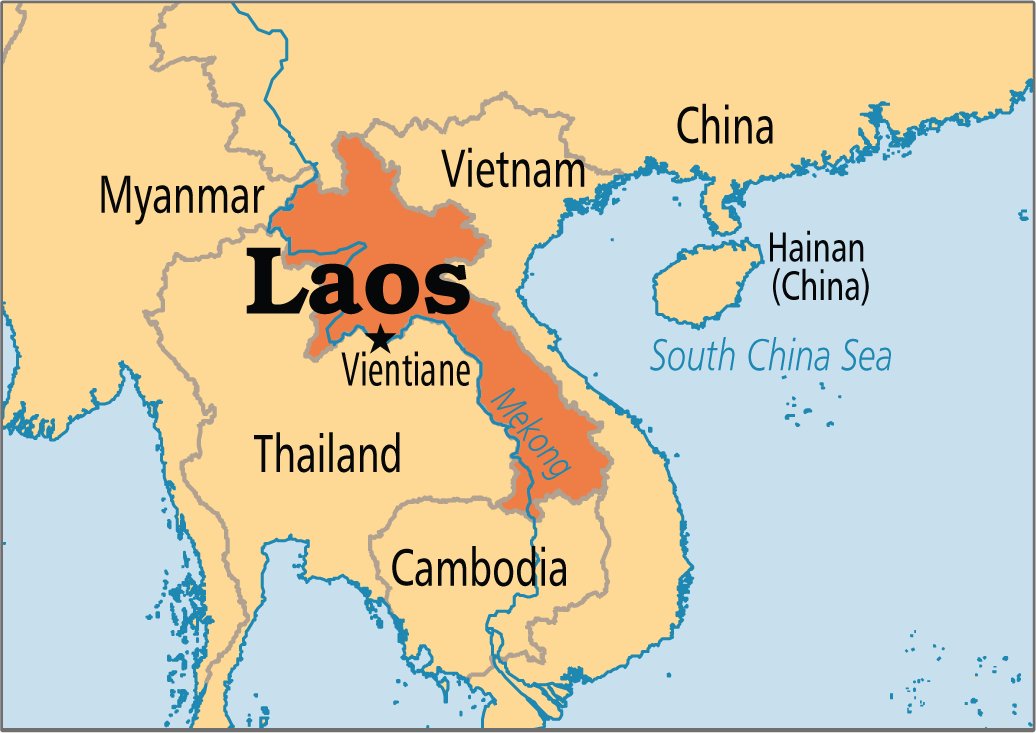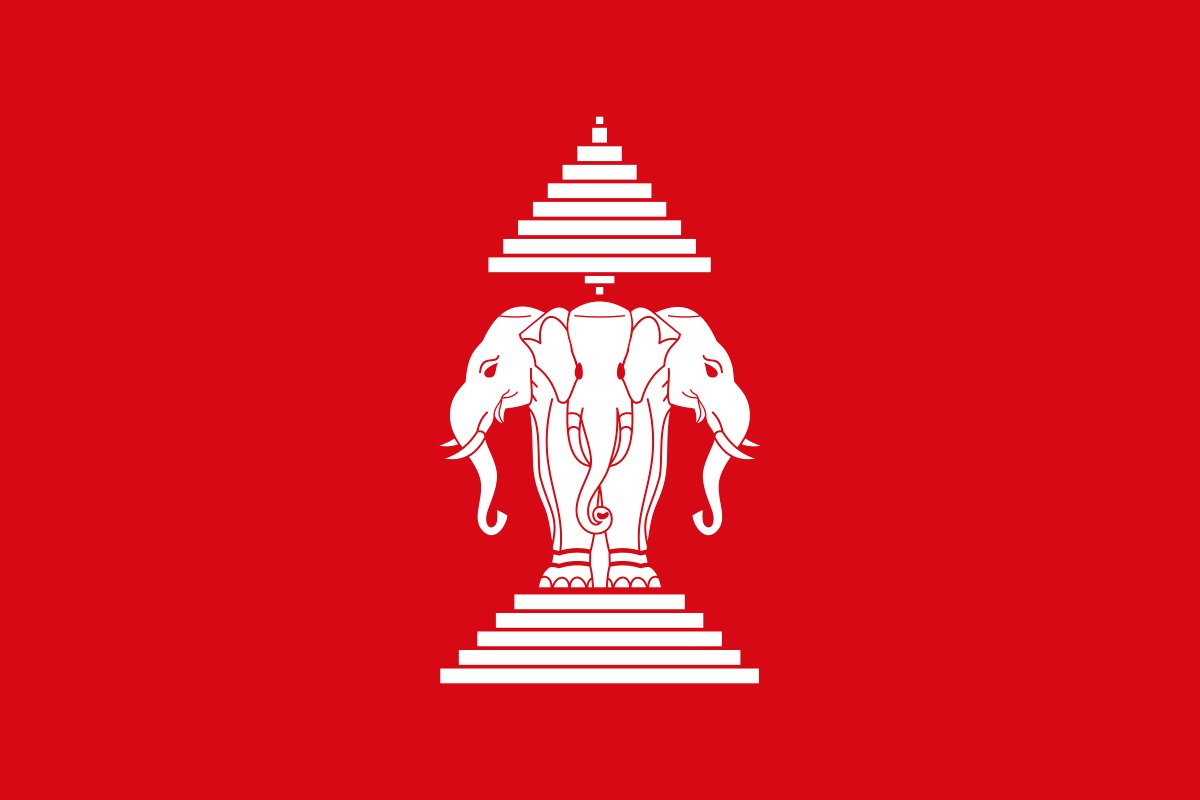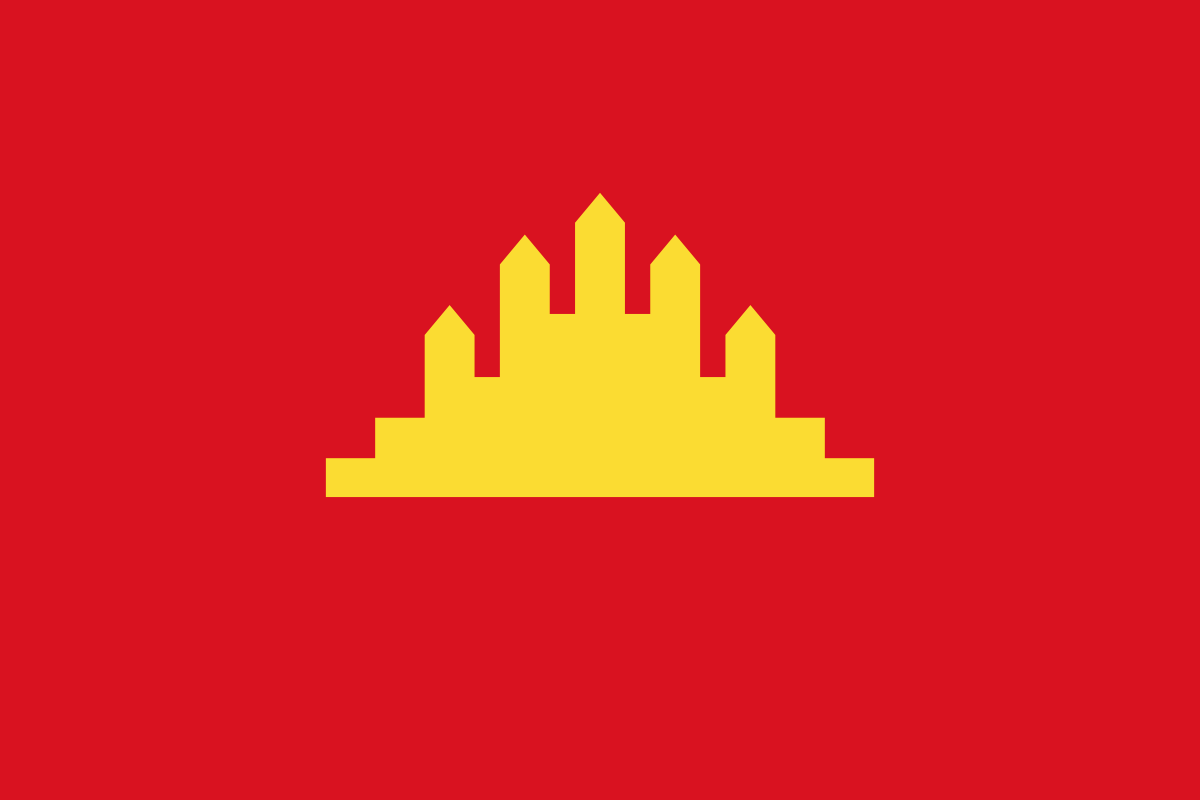All of us know about North Korea, Asia& #39;s #1 police state. All of us know even better about China.
But how many of us know about Asia& #39;s #2 police state? No, it& #39;s not China, it& #39;s the Lao People& #39;s Democratic Republic, or Laos.
I shall briefly talk about Laos in this thread.
But how many of us know about Asia& #39;s #2 police state? No, it& #39;s not China, it& #39;s the Lao People& #39;s Democratic Republic, or Laos.
I shall briefly talk about Laos in this thread.
Laos is a landlocked country in Southeast Asia. It& #39;s bordered by China to its north, Vietnam to its east, Cambodia to its south and Thailand and Myanmar to its west.
The Mekong river starts in Tibet, China and flows through Southeast Asia before mixing in the South China Sea.
The Mekong river starts in Tibet, China and flows through Southeast Asia before mixing in the South China Sea.
But first, back to 1945.
After WWII ended, on September 2, 1945, Vietnamese revolutionary Hồ Chí Minh declared Vietnam& #39;s independence from France. It led to a war between Vietnamese Communist nationalists and the French forces in what would become the First Indochina War.
After WWII ended, on September 2, 1945, Vietnamese revolutionary Hồ Chí Minh declared Vietnam& #39;s independence from France. It led to a war between Vietnamese Communist nationalists and the French forces in what would become the First Indochina War.
The USSR and its satellite states supported Hồ Chí Minh. The United States, Laos and Cambodia and the vassal state of Vietnam under Bảo Đại supported France.
The war ended in 1954 with the establishment of North Vietnam under Hồ Chí Minh and South Vietnam under Bảo Đại.
The war ended in 1954 with the establishment of North Vietnam under Hồ Chí Minh and South Vietnam under Bảo Đại.
North Vietnam under Hồ Chí Minh was a formidable force. While the USSR and China backed North Vietnam, South Vietnam had the support of the United States and their allies.
The Vietnam war broke out in 1955 and lasted till 1975. It spanned throughout Southeast Asia.
The Vietnam war broke out in 1955 and lasted till 1975. It spanned throughout Southeast Asia.
The Vietnam War is also called the Second Indochina War. Communists fought to liberate the region from France and the West.
The Kingdom of Laos (formed in 1953) and the Kingdom of Cambodia (formed in 1953, became the Khmer Republic in 1970) were their regional enemies.
The Kingdom of Laos (formed in 1953) and the Kingdom of Cambodia (formed in 1953, became the Khmer Republic in 1970) were their regional enemies.
Savang Vatthana, King of Laos, and Norodom Sihanouk, military dictator of Cambodia, were seen as puppets of the West.
With the backing of the USSR, the North Vietnamese Communist forces provided arms, logistics and training to Laotian and Cambodian Communist guerrillas.
With the backing of the USSR, the North Vietnamese Communist forces provided arms, logistics and training to Laotian and Cambodian Communist guerrillas.
Thanks to the poor state of the economies of both the Kingdom of Laos and the Kingdom of Cambodia/the Khmer Republic, and poorly trained armies, they were no match for the Communists trained by Hanoi (capital of North Vietnam).
The Khmer Republic fell on April 17, 1975.
The Khmer Republic fell on April 17, 1975.
Pol Pot and the Khmer Rouge created Democratic Kampuchea. After 4 years of mass murder and starvation that exterminated 25% of Kampuchea& #39;s population, Vietnam (reunified in 1976) sent its forces to depose the Khmer Rouge and setup the People& #39;s Republic of Kampuchea in 1979.
Meanwhile, on December 2, 1975, the Pathet Lao Communists deposed the last king of Laos, Savang Vatthana, ending a 16 year long civil war.
The entire Lao Royal Family were sent to labor camps. The Kingdom of Laos was exiled and eventually based itself in Gresham, Oregon, USA.
The entire Lao Royal Family were sent to labor camps. The Kingdom of Laos was exiled and eventually based itself in Gresham, Oregon, USA.
Now on to the topic: What& #39;s life like in the Communist state of Laos?
When you walk down the road in capital Vientiane, everything will appear normal. There& #39;s no ban on religion. Everybody will appear friendly and things will look easygoing, especially if you& #39;re a foreigner.
When you walk down the road in capital Vientiane, everything will appear normal. There& #39;s no ban on religion. Everybody will appear friendly and things will look easygoing, especially if you& #39;re a foreigner.
But for the average Laotian citizen, life is a different story.
The govt in Laos is still Communist. One word the regime hates and that& #39;s the end. Unlike China and Vietnam, where trials after detention are the norm, people who speak out simply disappear from the public eye.
The govt in Laos is still Communist. One word the regime hates and that& #39;s the end. Unlike China and Vietnam, where trials after detention are the norm, people who speak out simply disappear from the public eye.
What makes Laos particularly disturbing is that the average Laotian citizen doesn& #39;t know what and where the political red lines are. And it doesn& #39;t matter how useful and efficient the person is, if the regime perceives a challenge to its authority, that person will vanish.
Take the case of Sombath Somphone, a Laotian rural development expert educated in the United States.
https://www.rfa.org/english/news/laos/us-still-concerned-09082016154511.html
On">https://www.rfa.org/english/n... December 15, 2012, Sombath& #39;s jeep was stopped at a police checkpoint. He was yanked out of his jeep, forced into a white truck and taken away.
https://www.rfa.org/english/news/laos/us-still-concerned-09082016154511.html
On">https://www.rfa.org/english/n... December 15, 2012, Sombath& #39;s jeep was stopped at a police checkpoint. He was yanked out of his jeep, forced into a white truck and taken away.
He hasn& #39;t been heard from since.
His wife Ng Shui-Meng started a campaign to make Vientiane give information about him, and in 2013, it came to the notice of then-US Secretary of State John Kerry.
Ng Shui-Meng spoke at the 2016 Oslo Freedom Forum. https://www.youtube.com/watch?v=tYkzJLX19rU">https://www.youtube.com/watch...
His wife Ng Shui-Meng started a campaign to make Vientiane give information about him, and in 2013, it came to the notice of then-US Secretary of State John Kerry.
Ng Shui-Meng spoke at the 2016 Oslo Freedom Forum. https://www.youtube.com/watch?v=tYkzJLX19rU">https://www.youtube.com/watch...
The regime at Vientiane is so totalitarian that they forcibly disappeared Houayheuang "Muay" Xayabouly, a female environmentalist and Internet activist who merely asked for help for victims of a flood due to the collapse of a dam in southern Laos. https://www.bangkokpost.com/opinion/opinion/1861639/in-laos-price-of-free-speech-a-heavy-one">https://www.bangkokpost.com/opinion/o...
Lao authorities also disappear dissidents in Thailand in coordination with Thai authorities.
Od Sayavong, 34-year-old cook and democracy activist, vanished in Bangkok. He was a person of concern registered at UNHCR awaiting resettlement in a third nation. https://www.bangkokpost.com/thailand/general/1744989/lao-activist-vanishes-in-bangkok">https://www.bangkokpost.com/thailand/...
Od Sayavong, 34-year-old cook and democracy activist, vanished in Bangkok. He was a person of concern registered at UNHCR awaiting resettlement in a third nation. https://www.bangkokpost.com/thailand/general/1744989/lao-activist-vanishes-in-bangkok">https://www.bangkokpost.com/thailand/...
The ruling Lao People& #39;s Revolutionary Party has close trade deals with the Chinese Communist Party and is involved in many projects especially in rural Laos which are mostly to the detriment of Laotian villagers.
They trade the nation& #39;s natural resources in return for money.
They trade the nation& #39;s natural resources in return for money.
Also, Laos is quite a majoritarian state. The ruling party is comprised mostly of Laotians (after whom Laos is named and form 53% of the population) who hurt the interests of minorities like the Khmu, Hmong, Tai and other indigenous tribes who live in the foothills and mountains.
Laos is one of the world& #39;s poorest and least developed countries. Its population is 7 million, of which 6 million people live in rural areas.
Also, Laos is a source and transit country for human trafficking. Each year, between 200,000 and 450,000 people are trafficked.
Also, Laos is a source and transit country for human trafficking. Each year, between 200,000 and 450,000 people are trafficked.
Due to extreme poverty and lack of opportunities, many people fall prey to human and sex trafficking. The vast majority of the victims are 12-18 year old girls.
#1 https://sengsavang.org/en/human-trafficking-in-laos/
#2">https://sengsavang.org/en/human-... https://laos.opendevelopmentmekong.net/topics/human-trafficking
The">https://laos.opendevelopmentmekong.net/topics/hu... destination is usually Thailand but also China and Malaysia.
#1 https://sengsavang.org/en/human-trafficking-in-laos/
#2">https://sengsavang.org/en/human-... https://laos.opendevelopmentmekong.net/topics/human-trafficking
The">https://laos.opendevelopmentmekong.net/topics/hu... destination is usually Thailand but also China and Malaysia.
The govt in Laos is bankrupt and relies on aid from NGOs and the international community for help to rehabilitate trafficking victims.
Laos has a very poor education system. It& #39;s one of the least free nations as well.
https://theaseanpost.com/article/sad-state-laos-education-system
Freedom">https://theaseanpost.com/article/s... and education go a long way.
Laos has a very poor education system. It& #39;s one of the least free nations as well.
https://theaseanpost.com/article/sad-state-laos-education-system
Freedom">https://theaseanpost.com/article/s... and education go a long way.
The people of Laos usually move to Thailand for economic opportunities. Historically speaking, Thailand and Laos enjoyed a good relationship. But in 1779, Thailand annexed Laos and made it a vassal state till 1827, when the King of Laos revolted giving Laotians some autonomy.
Till 1893, things remained somewhat calm. Then the French invaded the Indochina region and annexed Vietnam. The French fought with Thailand and took over eastern Laos. After WWII, Laos being part of Southeast Asia was entangled in the Cold War between the USA and the USSR.
And after the fall of the USSR in 1991, Laos is now a zone of contention between China and the USA. China has the upper hand.
So what& #39;s the nature of the Laotian people?
They& #39;re one of the most humble people on earth, and they quickly grab opportunities whenever they get them.
So what& #39;s the nature of the Laotian people?
They& #39;re one of the most humble people on earth, and they quickly grab opportunities whenever they get them.
Laotians are deeply Buddhist. Buddhism is part and parcel of Laotian life.
They& #39;re a laid-back population that prefers a calm life compared to the more dynamic people of Hong Kong, Taiwan, Thailand, Malaysia and Singapore.
Laotians are considered not too bright when compared/
They& #39;re a laid-back population that prefers a calm life compared to the more dynamic people of Hong Kong, Taiwan, Thailand, Malaysia and Singapore.
Laotians are considered not too bright when compared/
with their neighbors. But that isn& #39;t true in all the cases. They might not be well-educated (education in Laos is terrible) but they know to get by. It& #39;s just that they prefer a slower pace of life and more calm and peace.
Despite a lot of destruction of the Laotian landscape/
Despite a lot of destruction of the Laotian landscape/
Laos is still a beautiful country especially in the countryside. Chinese projects aren& #39;t helping that country. Also, dams and other infrastructure in rural Laos unleash misery of huge proportions when they break.
Laos is rich in minerals like copper, tin, gold, gypsum, etc.
Laos is rich in minerals like copper, tin, gold, gypsum, etc.
And with the Communist regime at Vientiane, it makes the perfect hunting ground for Chinese interests.
Thailand, China and Vietnam are its main trade partners for both import and export.
In short, Laos has all it needs to succeed and become the Belgium of Southeast Asia.
Thailand, China and Vietnam are its main trade partners for both import and export.
In short, Laos has all it needs to succeed and become the Belgium of Southeast Asia.
But a tyrannical regime at Vientiane, hostile political headwinds and a laid-back approach to life are holding this nation back. Even historically, they never woke up till 1827, almost half a century after Thailand annexed Laos. Again, when France took over the eastern half....
The Laotians were ambiguous in their opinion. Some considered it a loss whilst some were thankful for the French invasion.
During the Cold War, Laos became the most bombed nation on earth. The US dropped 2 million tons of ordnance over Laos during 580,000 bombing missions.
During the Cold War, Laos became the most bombed nation on earth. The US dropped 2 million tons of ordnance over Laos during 580,000 bombing missions.
That& #39;s a planeload of bombs falling over Laos every 8 minutes, 24 hours a day, for 9 years!
That explains why Laos is languishing at the bottom when it can be much better.
I came to know about all this when I visited Thailand last year. I wanted to post about it back then/
That explains why Laos is languishing at the bottom when it can be much better.
I came to know about all this when I visited Thailand last year. I wanted to post about it back then/
but then I was busy visiting places and quickly forgot about it.
This is the end of my take on Laos.
Thank you all for reading.
Have a nice day. Good night.
This is the end of my take on Laos.
Thank you all for reading.
Have a nice day. Good night.

 Read on Twitter
Read on Twitter







